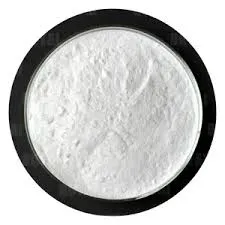
Dec . 14, 2024 00:35 Back to list
Exploring HPMC-Based Formulations for Enhanced Drug Delivery and Stability
HPMC Formulation An Overview
Hydroxypropyl methylcellulose (HPMC) is a versatile polymer widely used in various applications, particularly in pharmaceutical formulations. This water-soluble cellulose derivative has garnered significant attention due to its unique properties, making it a crucial component in drug delivery systems, food products, and cosmetic formulations. This article explores the formulation, benefits, and applications of HPMC, focusing on its role in the pharmaceutical industry.
HPMC is produced through the chemical modification of cellulose. The process involves the introduction of hydroxypropyl and methoxy groups into the cellulose chain, resulting in enhanced solubility and viscosity. This unique structure allows HPMC to form a gel-like consistency in the presence of water, making it an excellent thickening agent and stabilizer.
HPMC Formulation An Overview
In addition to its role as a binder, HPMC also acts as a coating agent for tablets and pellets. The hydrophilic nature of HPMC allows for the formation of a smooth and uniform coating, which protects the API from environmental factors such as moisture and light. This protective layer not only enhances the stability of the formulation but also aids in masking the taste of bitter drugs, thereby improving patient compliance.
hpmc formulation

HPMC's hydrophilic properties make it an excellent excipient for ocular formulations, such as eye drops. In these applications, HPMC serves as a viscosity-increasing agent, providing a longer residence time in the eye and improving drug absorption. This is particularly beneficial for treating conditions such as dry eye syndrome, where prolonged retention of the active ingredient is crucial for therapeutic efficacy.
Furthermore, HPMC is used in emulsions and suspensions due to its ability to stabilize formulations. It prevents the separation of oil and water phases in emulsions, ensuring a homogenous product. This property is especially important in cosmetic formulations, where the stability and appearance of the product can significantly affect consumer acceptance.
The environmental aspects of HPMC are also noteworthy. Being derived from natural cellulose, HPMC is considered a biodegradable alternative to many synthetic polymers. This characteristic aligns with the growing trend toward sustainability in formulation science, as consumers are increasingly interested in environmentally friendly products.
In summary, HPMC formulation plays a crucial role in various industries, particularly in pharmaceuticals and cosmetics. Its unique properties, including excellent binding, coating capabilities, and stability in various formulations, make it a preferred choice for formulators. As research continues, it is likely that new applications and formulations utilizing HPMC will emerge, further expanding its significance in the field of formulation science. With its versatility and effectiveness, HPMC remains a cornerstone ingredient in the development of innovative and sustainable products, catering to the evolving needs of consumers and the industry alike.
-
Versatile Hpmc Uses in Different Industries
NewsJun.19,2025
-
Redispersible Powder's Role in Enhancing Durability of Construction Products
NewsJun.19,2025
-
Hydroxyethyl Cellulose Applications Driving Green Industrial Processes
NewsJun.19,2025
-
Exploring Different Redispersible Polymer Powder
NewsJun.19,2025
-
Choosing the Right Mortar Bonding Agent
NewsJun.19,2025
-
Applications and Significance of China Hpmc in Modern Industries
NewsJun.19,2025







